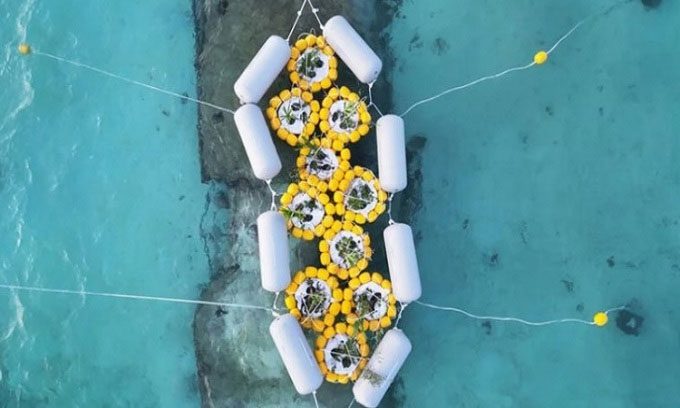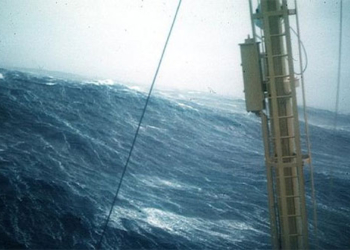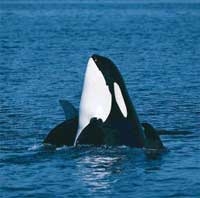The sand accumulation guidance system developed by MIT has the potential to create new islands over time, addressing the challenges of rising sea levels and the impacts of storms.

MIT’s sand accumulation guidance system. (Image: Design Boom).
The Self-Assembly Lab at the Massachusetts Institute of Technology (MIT) has collaborated with the Invena organization in the Maldives to create a network of submerged structures that harness wave momentum to guide sand accumulation in targeted areas. This project aims to create new islands and mitigate coastal erosion over time, providing a flexible solution to protect coastal communities from rising sea levels, reported Design Boom on August 12.
In a world affected by climate change, rising sea levels, and increasingly powerful storms pose significant risks to island nations and coastal regions. Approximately 40% of the world’s population lives in vulnerable coastal areas, highlighting the urgent need for innovative solutions to address this impending threat. Traditional methods for storm and sea-level rise mitigation often involve building fixed seawalls or regularly dredging coastal zones, making it challenging to keep pace with natural changes.
The research team at MIT’s Self-Assembly Lab describes their goal as “instead of combating the forces of nature, they want to harness that power to build.” Researchers have created prefabricated bubbles filled with sand and other buoyant structures placed underwater to gradually construct artificial beaches.
The lab collaborates with partners in the Maldives to build and deploy the submerged structures. With their characteristic geometric shapes and linear arrangements, the system can transform into flexible artificial reefs. By harnessing the energy of ocean waves, they promote and direct sand accumulation at carefully selected sites. Moreover, the research team adjusts the positioning of the structures to align with seasonal changes and storm trajectories. This method aims to reshape the sandy landscape sustainably by leveraging natural forces.
Thanks to the energy from the ocean, the research team believes they can promote self-organizing sand structures without the need for permanent artificial barriers or continuous dredging that could harm natural habitats.




















































